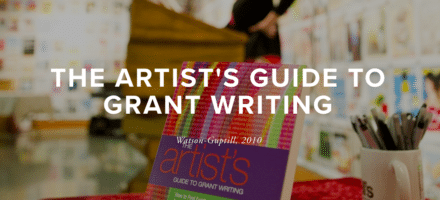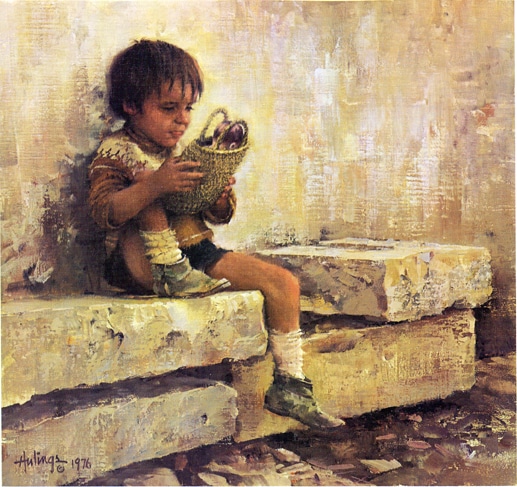It’s the night before the grant application is due and you’re feeling hopeful and confident. You followed the instructions to the letter. You enlisted a colleague to read and critique your proposal days ago and incorporated her feedback. You carefully selected work samples that best represent what you can do AND are related to what you’re proposing. You’re done, right?
As you already know, most grant and residency applications are incredibly competitive. You may be running neck and neck with artists who have also done an excellent job on their applications. So, how do you take what you know to be a “good” application and make it better?
When I wrote The Artist’s Guide to Grant Writing, I interviewed artists who’d been successful winning grants and also the grants officers who sit on the other side of the table reviewing applications. I asked them what it takes to catapult an application from good or even very good to great.
The hardest thing about writing a grant application is that you have to write about a project that’s not yet completed. It’s likely still just an idea, at best a sketchy plan. But you need to make it sound like it already exists or at a minimum, you can see it clearly in its finished state. Of course, you may not know exactly what it’s going to look like, feel like, smell like… but you have to write about it, as if you do.
As an artist coach, I review dozens of grant applications for artists and created a list of the most effective editing tips. Many of these tips will help the project become more alive and real both in your mind and the mind of the reviewer.
Which ones resonate with you the most? I’d love to hear how you used them. Send me the before and after sentence. I’d love to see how these tips made your application go from good to great.
- Delete any qualifiers: very, really, sort of, kind of. They make your project sound more wishy-washy and less solid.
- Describe your project in detail. Confirm as many of the aspects of it as possible. When you have numbers, use them. For example, can statistics support your case? If you’re interviewing people, how many are you interviewing? You get the idea.
- Write in your own natural voice, not a stilted, academic voice that you think might sound “smart.” (This is why getting interviewed helps. Have a supportive friend or colleague interview you about your project. Have someone take notes while you talk. Often, you will talk using words and phrases you might never write down.)
- Use concrete nouns and active verbs. Be as specific and colorful as possible. Don’t just say “animal” but tell me what animal it was: A cat? A giraffe? A frog?
- Use the “active voice” rather than the “passive voice.” A classic example of the passive voice is “Mistakes were made.” It’s passive because you can’t tell from the sentence who made the mistake. The passive voice is used to obscure, which is the opposite of what you want to do in your grant application.
- The fewer adverbs and adjectives, the better. Rather than describing how beautiful, stupendous, incredible, wonderful your project is, describe it like a journalist. Stick to the facts but use the most colorful words to describe those facts.
- Less is more: One right word is often more powerful than three right words.
- Use sensory details whenever possible that describe taste, smell, sight, sound or touch. Make images with your words.
- Write to your (real or imagined) perfect audience member. Think of a person who would love your project, write the grant application to them. Or describe it as if you’re writing a letter to a friend.
- Change your verbs “could,” “should” or “might” to “will.” Describe the project as if it’s already happening. That shows the reviewers that you’re determined to make this project happen, with or without them. That’s the attitude you need to convey.
This list is adapted from The Artist’s Guide to Grant Writing, by Gigi Rosenberg, published by Watson-Guptill.









Thanks Gigi – your article is incredibly helpful.